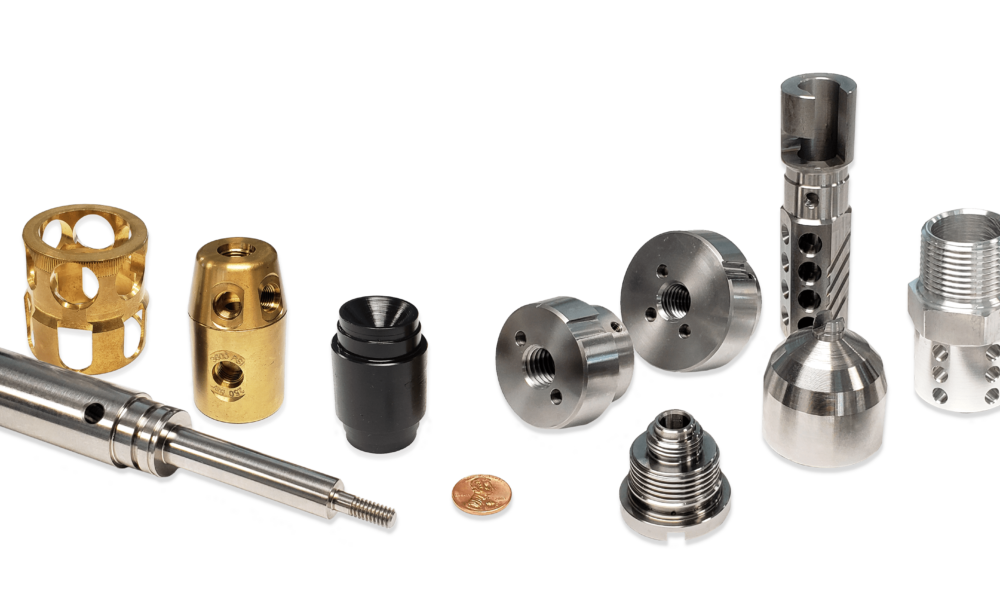Different types and shapes of CNC machining services are available. The distinction between CNC turning and CNC machining, two popular CNC technologies, is discussed in this article.
What are CNC Milling and CNC Turning?
Machinists may create a wide range of CNC machined items using one of the most popular CNC machining services, the CNC milling service. CNC mills are frequently used by prototype businesses to produce unique functioning prototypes.

In a CNC milling service, a cutting tool that rotates quickly is moved along three or more axes using computer instructions. The spinning cutting tool removes material in a controlled way when it comes into contact with the workpiece. Up until the workpiece resembles the intended portion, the cutting tool makes a series of passes across the workpiece's surface.
The workpiece is typically held firmly in place on the machine bed by vice in CNC mills to keep it stationary. Multi-axis CNC mills, on the other hand, can rotate or shake the workpiece to generate more cutting angles. As a result, the machinist may produce more intricate components without manually rotating the workpiece.
CNC milling is used by companies that offer fast prototype services because it is an all-in-one, quick-turnaround procedure.
What is CNC Turning?

Machinists utilize CNC turning service, a type of CNC machining, to create rounded, cylindrical, and conical pieces. Despite being less flexible than CNC milling, it is one of the most used quick prototyping services and CNC machining services.
CNC turning centers or CNC lathes are tools used for CNC turning. They differ from CNC mills in that the workpiece is rapidly rotated in a chuck but the cutting tool is not. According to computer commands, the cutting tool, which is mounted to a turret, moves toward the rotating workpiece and removes material as needed.
To produce tubular CNC machined parts, a CNC lathe can cut the outside of the workpiece or bore through the inside.
Advantages of CNC Milling
CNC mills have a lot of benefits for producers and prototype businesses. Unlike lathes, mills are adaptable equipment that can produce a variety of shapes. Additionally, a range of cutting tools can be applied to various processes, including roughing and end-milling.
Despite the fact that mills are production machines in and of themselves, they are also helpful for post-machining. They can be used, for instance, to add details to items that have been machined, molded, or 3D printed.
In modest volumes, CNC milling is also quick, repeatable, and affordable – in part because tooling is not needed. Thus, it can be discovered among manufacturing and quick prototyping services.
Advantages of CNC Turning
The biggest advantage of CNC turning is its ability to create round profiles. It is much more difficult to achieve perfect roundness using other CNC machining services like CNC milling or CNC routing.
CNC turning is also highly accurate, which makes it a valuable technology for boring holes of precise dimensions with set tolerances.
CNC milling and CNC turning can be combined to reap the benefits of both processes. In most cases, CNC turning takes place first, allowing the machinist to mill further (asymmetrical) details on the part.
Parts made with CNC Milling
Example parts made with CNC milling include:
Fittings: Milled fittings connect two or more parts together
Enclosures and housings: Electrical devices and other products can use custom-milled enclosures to protect internal components
Brackets: Milled brackets can contain custom threads and holes and may be more complex than sheet metal brackets
Gears: CNC milling can produce straight and spiral gears for mechanical devices
Mold tooling: Milled tooling, made of steel or aluminum, allows for rapid prototyping of molded parts
Engine parts: Automotive engineers use CNC milling for engine blocks and other parts
Medical devices: CNC mills can produce implants, surgical instruments, and other medical devices
Water pumps: Multi-axis mills can create reliable impellers for hydraulic equipment
Forming punches: CNC mills can create other manufacturing equipment, such as forming punches for sheet metal fabrication

Parts made with CNC Turning
Example parts made with CNC turning include:
Rollers: CNC lathes can fabricate rollers with tight tolerances for industrial use
Ball joints: CNC turning is ideal for rounded connective devices like ball joints
Nuts and bolts: The accuracy of turning makes it suitable for tolerance-critical items like nuts and bolts
Shafts: Shafts with rounded profiles are highly suited to CNC turning
Flanges: CNC-turned flanges can strengthen beams and pipes
Nozzles: Nozzles are typically cylindrical or conical with hollow insides, making them suitable for CNC turning
Turbines: CNC turning can produce round turbine blades for the energy industry
Firearms: A CNC lathe can produce the tubular shape required for a firearm barrel

Which should you choose?
Generally speaking, CNC turning is preferable for items with a round, cylindrical, or conical profile, whereas CNC milling is preferable for all other parts. In case you're unsure, a machining professional can direct you to the best CNC machining service for your particular job.
However, CNC turning and milling can be effectively combined. CNC milling can come after CNC turning if an item mostly has a round shape but also needs asymmetrical cuts or features. A huge hole needs to be bored into the center of a boxy or irregularly shaped object, hence CNC turning may also be used after CNC milling, albeit it is less frequent.
Finally, sometimes you don’t have to choose: CNC milling-turning centers integrate both technologies into a single production device.



